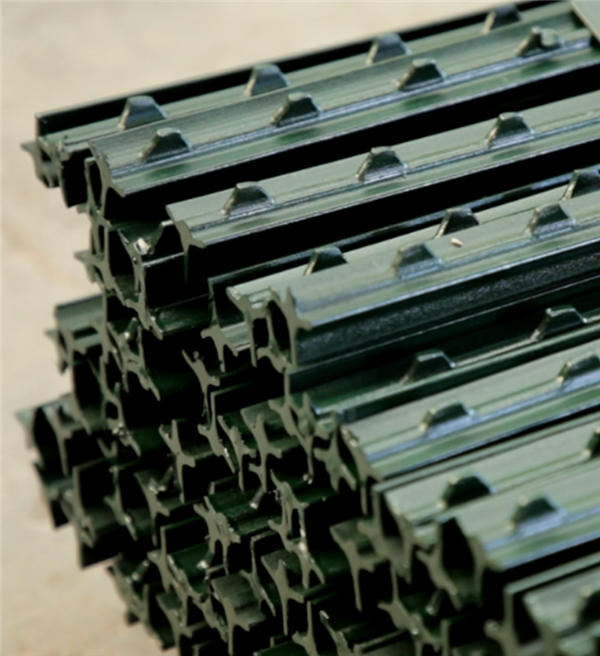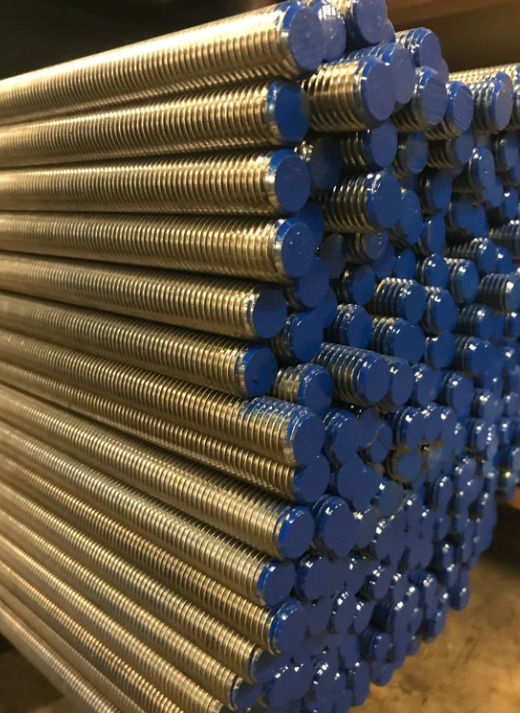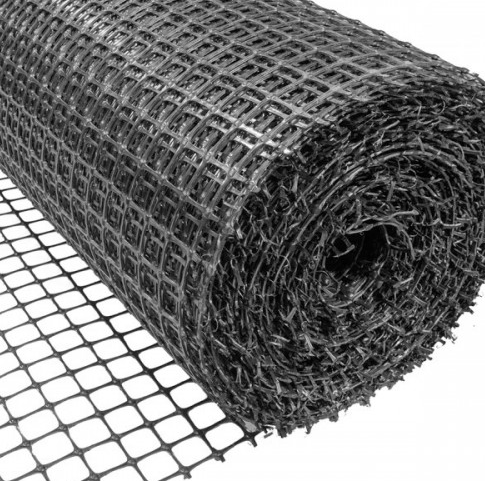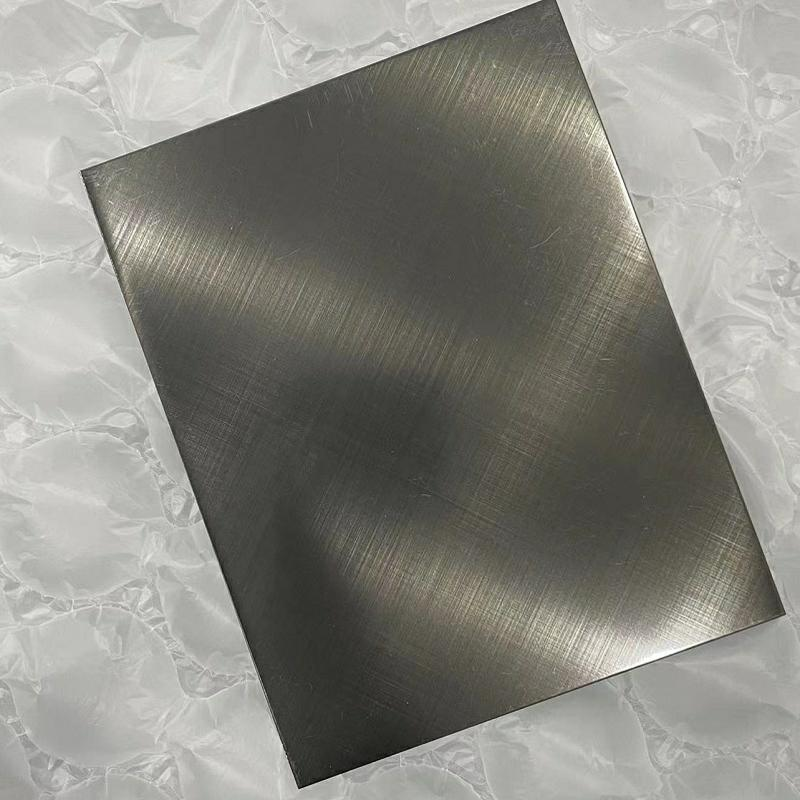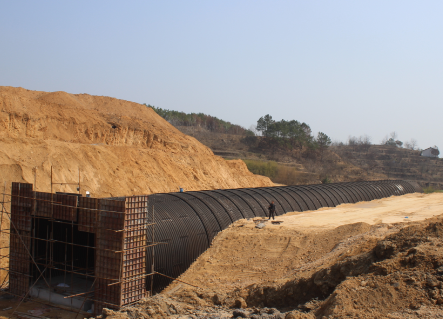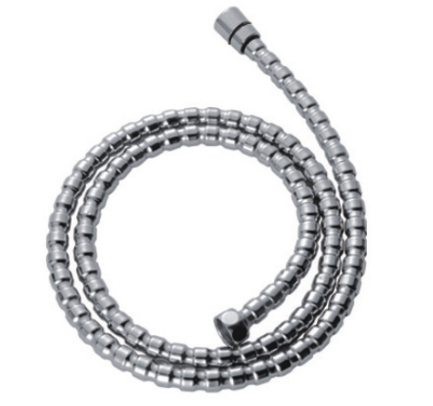Construction Glass Market - Opportunities, Size & Growth [2028]
The Global Construction Glass Market was valued at USD 125.73 billion in 2022 and is growing at a CAGR of 5.27% during the forecast period. The global construction glass market is impacted by rapid urbanization and industrialization, along with a rising need for sustainable and energy-efficient building solutions. Furthermore, the growth of the global real estate sector drives the demand for construction glass products, thereby accelerating market growth. Additionally, advancements in glass manufacturing techniques have resulted in the production of innovative and high-performance glass materials, which significantly contribute to the expansion of the market.
Key Market Drivers
Growing Urbanization and Infrastructure Development
The global construction glass market is heavily influenced by the ongoing trend of rapid urbanization and extensive infrastructure development projects worldwide. As populations continue to transition from rural to urban areas, the demand for residential, commercial, and industrial buildings has surged. This surge in construction activity has led to an increased demand for construction materials, including glass, making it a key driver for the construction glass market.
One of the primary factors behind the growth of urbanization is the promise of improved economic opportunities and enhanced living standards in urban areas. This influx of people into cities has resulted in a need for more housing, office spaces, retail outlets, and public infrastructure such as roads, bridges, and airports. All of these construction projects require glass for windows, facades, and interior applications.
Furthermore, governments worldwide are making significant investments in infrastructure development to stimulate economic growth. Initiatives like China's Belt and Road Initiative and the infrastructure plans in the United States serve as prime examples of this trend. These projects encompass a wide range of construction activities that require construction glass, such as skyscrapers, public transport terminals, and sports stadiums.
Download FREE Sample Report @ https://www.techsciresearch.com/sample-report.aspx?cid=2451
The construction glass market benefits from this urbanization and infrastructure development trend in multiple ways. Firstly, it creates a steady and growing demand for glass products in construction applications. Secondly, the architectural trend towards incorporating more glass in modern building designs, driven by the desire for natural light and energy efficiency, further fuels the demand for construction glass.
In conclusion, the growing urbanization and infrastructure development worldwide present a significant driver for the global construction glass market. As cities expand and new infrastructure projects emerge, the demand for construction glass is expected to continue its upward trajectory, making it a highly lucrative market for manufacturers and suppliers in the construction materials industry.
Increasing Emphasis on Energy Efficiency and Sustainable Building Practices
The global construction glass market is witnessing a significant boost due to the growing focus on energy efficiency and sustainable building practices. With increasing environmental concerns and stricter government regulations, the construction industry is embracing greener standards, and glass plays a pivotal role in this transformative process.
One of the key driving forces behind this shift is the rising demand for energy-efficient buildings. High-performance glass products, including low-emissivity (Low-E) glass and insulated glass units (IGUs), are gaining popularity due to their ability to reduce heat transfer and, consequently, heating and cooling costs. These glass solutions help buildings maintain comfortable indoor temperatures while minimizing energy consumption, which is a crucial aspect of sustainable construction.
In addition to energy efficiency, the adoption of glass in construction is being driven by sustainable building practices. Glass is recognized as an environmentally friendly material because of its recyclability and contribution to natural daylighting, reducing the reliance on artificial lighting. Sustainable building certifications, such as LEED (Leadership in Energy and Environmental Design), often reward projects that incorporate eco-friendly materials like glass.
Architects and builders are increasingly designing structures with a focus on aesthetics and environmental responsibility, leading to innovative glass applications. Dynamic glazing systems, for example, can adjust their tint to optimize natural light while reducing heat gain, enhancing both energy efficiency and occupant comfort.
Moreover, government incentives and regulations are promoting the use of sustainable materials and construction practices. Building codes in many regions now require specific energy-efficient features, often involving the implementation of advanced glass solutions. This regulatory environment serves as a clear market driver for construction glass manufacturers.
In conclusion, the emphasis on energy efficiency and sustainable building practices is a significant catalyst for the global construction glass market. As the construction industry continues to prioritize environmentally responsible solutions, the demand for advanced glass products that enhance energy performance and contribute to sustainable design will continue to grow.
Technological Advancements and Innovative Glass Products
Technological advancements and the development of innovative glass products are propelling the global construction glass market forward. The construction industry is increasingly seeking glass solutions that not only meet aesthetic and functional requirements but also offer advanced features and capabilities.
One noteworthy technological advancement is the emergence of smart glass or switchable glass. Smart glass can alter its transparency or color through the application of an electric current, providing on-demand privacy or glare control. These smart glass solutions are gaining popularity in commercial and residential buildings, offering both aesthetic appeal and practical benefits, such as enhanced energy efficiency and privacy.
Another area of innovation is the integration of photovoltaic cells into glass, resulting in solar glass panels. These panels can generate electricity while still allowing natural light to pass through, making them a sustainable and energy-efficient choice for building envelopes. As the demand for renewable energy sources rises, solar glass becomes an increasingly attractive option for architects and builders.
Furthermore, advancements in coatings and glazing technologies have led to the creation of high-performance glass products that offer superior insulation, UV protection, and soundproofing capabilities. These innovations enhance the overall comfort and energy efficiency of buildings, making them highly desirable in the construction industry.
Additionally, the integration of augmented reality (AR) and virtual reality (VR) technologies is revolutionizing the design and visualization of glass applications in construction. Architects and designers can now utilize these technologies to simulate how different glass types and designs will appear in a building, allowing for more informed decision-making and greater customization.
In conclusion, technological advancements and innovative glass products are driving the global construction glass market by providing architects, builders, and property owners with a wide array of options to meet their evolving needs. As these technologies continue to progress, the construction glass market is poised for sustained growth, fueled by the demand for cutting-edge solutions in modern building design and construction.
Key Market Challenges
Fluctuating Raw Material Prices and Supply Chain Disruptions
The global construction glass market encounters a significant challenge in the form of fluctuating prices of raw materials and disruptions in the supply chain. The production of construction glass heavily relies on key raw materials such as silica, soda ash, limestone, and alumina. These materials are subjected to price fluctuations due to various factors, including changes in global demand, supply constraints, and geopolitical issues.
One of the primary challenges lies in the volatility of energy costs, given the energy-intensive nature of glass manufacturing. Fluctuations in energy prices can have a substantial impact on the overall production costs of glass, thereby affecting the pricing and profitability of glass manufacturers. Moreover, the availability and cost of natural gas, a fundamental energy source for glass melting, can be influenced by geopolitical tensions and market forces, leading to supply disruptions.
Additionally, supply chain disruptions have become a growing concern, particularly in light of the COVID-19 pandemic. Lockdowns, travel restrictions, and factory closures have disrupted the transportation of raw materials, production processes, and the delivery of finished glass products. These disruptions not only result in delays in project timelines but also increase costs due to storage and logistics challenges.
Furthermore, the construction glass market is highly competitive, with manufacturers operating on narrow profit margins. Sudden spikes in raw material prices or extended supply chain disruptions can erode these margins and exert pressure on manufacturers to either absorb the increased costs or transfer them to customers, potentially impacting market competitiveness.
To address this challenge, industry stakeholders must focus on diversifying their sources of raw materials, exploring alternative energy sources, and implementing efficient supply chain management strategies. Collaboration among manufacturers, governments, and industry associations is also vital to mitigate the impact of raw material price fluctuations and supply chain disruptions on the construction glass market.
Stringent Environmental Regulations and Sustainability Demands
The construction glass market is confronted with a growing challenge of meeting stringent environmental regulations and sustainability demands. As concerns regarding climate change and resource depletion continue to escalate, governments worldwide are implementing stricter environmental standards and advocating sustainable building practices. Glass manufacturers must adapt to these evolving requirements in order to maintain their competitiveness.
Related Reports
Chilled Beam System Market [2028]: Analysis & Forecast
Energy-efficient Windows Market [2028]: Analysis & Forecast
Table of Content-Construction Glass Market
- Product Overview
- Research Methodology
- Impact of COVID-19 on Global Construction Glass Market
- Executive Summary
- Voice of Customers
5.1. Brand Awareness
5.2. Construction Glass Selection Criteria
5.3. Satisfaction Level
5.4. Challenges/Unmet Needs
- Global Construction Glass Market Landscape
- Global Construction Glass Market Outlook
7.1. Market Size & Forecast
7.1.1. By Value & Volume
7.2. Market Share & Forecast
7.2.1. By Product Type (Special Glass and Low- Emissivity Glass)
7.2.2. By Application (Commercial and Residential)
7.2.3. By Manufacturing Process (Float Glass Process and Rolled/Sheet Process)
7.2.4. By Chemical Composition (Soda-Lime, Potash-Lead and Potash-Lime)
7.2.5. By Region
7.2.6. By Company (2020)
7.3. Market Map
- Asia-Pacific Construction Glass Market Outlook
8.1. Market Size & Forecast
8.1.1. By Value & Volume
8.2. Market Share & Forecast
8.2.1. By Product Type
8.2.2. By Application
8.2.3. By Manufacturing Process
8.2.4. By Chemical Composition
8.2.5. By Country
8.3. Market Map
8.4. Asia-Pacific: Country Analysis
8.4.1. China Construction Glass Market Outlook
8.4.1.1. Market Size & Forecast
8.4.1.1.1. By Value
8.4.1.2. Market Share & Forecast
8.4.1.2.1. By Product Type
8.4.1.2.2. By Application
8.4.2. Japan Construction Glass Market Outlook
8.4.2.1. Market Size & Forecast
8.4.2.1.1. By Value
8.4.2.2. Market Share & Forecast
8.4.2.2.1. By Product Type
8.4.2.2.2. By Application
8.4.3. India Construction Glass Market Outlook
8.4.3.1. Market Size & Forecast
8.4.3.1.1. By Value
8.4.3.2. Market Share & Forecast
8.4.3.2.1. By Product Type
8.4.3.2.2. By Application
8.4.4. South Korea Construction Glass Market Outlook
8.4.4.1. Market Size & Forecast
8.4.4.1.1. By Value
8.4.4.2. Market Share & Forecast
Related articles:Construction & Real Estate
Unveiling the Power of Post-Tensioning Wedges in Structural Engineering
How long does it take for coating to cure?
How Long Does Ceramic Coating Take to Cure?
Can you still get 3 tab shingles?
How to insulate a shipping container home for extreme climates?
GFS Water Tanks: A Solution for Reliable Water Storage
8.4.4.2.1. By Product Type
8.4.4.2.2. By Application
8.4.5. Australia Construction Glass Market Outlook
8.4.5.1. Market Size & Forecast
8.4.5.1.1. By Value
8.4.5.2. Market Share & Forecast
8.4.5.2.1. By Product Type
8.4.5.2.2. By Application
- Europe Construction Glass Market Outlook
9.1. Market Size & Forecast
9.1.1. By Value & Volume
9.2. Market Share & Forecast
9.2.1. By Product Type
9.2.2. By Application
9.2.3. By Manufacturing Process
9.2.4. By Chemical Composition
9.2.5. By Country
9.3. Market Map
9.4. Europe: Country Analysis
9.4.1. Germany Construction Glass Market Outlook
9.4.1.1. Market Size & Forecast
9.4.1.1.1. By Value
9.4.1.2. Market Share & Forecast
9.4.1.2.1. By Product Type
9.4.1.2.2. By Application
9.4.2. United Kingdom Construction Glass Market Outlook
9.4.2.1. Market Size & Forecast
9.4.2.1.1. By Value
9.4.2.2. Market Share & Forecast
9.4.2.2.1. By Product Type
9.4.2.2.2. By Application
9.4.3. France Construction Glass Market Outlook
9.4.3.1. Market Size & Forecast
9.4.3.1.1. By Value
9.4.3.2. Market Share & Forecast
9.4.3.2.1. By Product Type
9.4.3.2.2. By Application
9.4.4. Italy Construction Glass Market Outlook
9.4.4.1. Market Size & Forecast
9.4.4.1.1. By Value
9.4.4.2. Market Share & Forecast
9.4.4.2.1. By Product Type
9.4.4.2.2. By Application
9.4.5. Spain Construction Glass Market Outlook
9.4.5.1. Market Size & Forecast
9.4.5.1.1. By Value
9.4.5.2. Market Share & Forecast
9.4.5.2.1. By Product Type
9.4.5.2.2. By Application
- North America Construction Glass Market Outlook
10.1. Market Size & Forecast
10.1.1. By Value & Volume
10.2. Market Share & Forecast
10.2.1. By Product Type
10.2.2. By Application
10.2.3. By Manufacturing Process
10.2.4. By Chemical Composition
10.2.5. By Country
10.3. Market Map
10.4. North America: Country Analysis
10.4.1. United States Construction Glass Market Outlook
10.4.1.1. Market Size & Forecast
10.4.1.1.1. By Value
10.4.1.2. Market Share & Forecast
10.4.1.2.1. By Product Type
10.4.1.2.2. By Application
10.4.2. Canada Construction Glass Market Outlook
10.4.2.1. Market Size & Forecast
10.4.2.1.1. By Value
10.4.2.2. Market Share & Forecast
10.4.2.2.1. By Product Type
10.4.2.2.2. By Application
10.4.3. Mexico Construction Glass Market Outlook
10.4.3.1. Market Size & Forecast
10.4.3.1.1. By Value
10.4.3.2. Market Share & Forecast
10.4.3.2.1. By Product Type
10.4.3.2.2. By Application
In the construction industry, builders and architects are constantly on the lookout for ways to make their structures stronger, safer, and more aesthetically pleasing. In some cases, this involves the use of innovative new materials. In others, it means deploying established materials in creative new ways.
One such material is glass. From customizable glass partitions to stylish glass staircase railings, glass is being used in new ways to help modern structures be more inviting and energy efficient. Keep reading for a detailed breakdown of the advantages of glass building materials in modern construction!
Greater Energy Efficiency
Without a doubt, one of the primary benefits of choosing glass building materials is their potential as an energy-efficient solution. Glass transmits natural light, allowing buildings to rely less on artificial lighting sources. Many commercial buildings use full-spanning glass walls and demountable glass partition walls to allow natural light to penetrate deep within the structure, helping them keep electricity costs under control.
When properly deployed, glass can help the structure leverage natural light as a heating source as well. For example, large windows on the south side of buildings can allow sunlight to penetrate the interior to help warm the space. By properly leveraging awnings and decorative screen panels during the warmer months, building owners can continue to capitalize on the sun’s lighting properties without causing the AC to kick into overdrive.
Besides these surface-level energy efficiency benefits, there are a few other factors to keep in mind. Glass is resistant to weather and does not rust, helping it require fewer maintenance resources than materials like wood or stone, which must be regularly painted and sealed to establish their protective properties. In addition, glass is a lightweight building option that is easy to work with, reducing the dead load of a building. Finally, glass is a highly recyclable material that can be used many times without sacrificing quality.
Safety Without Sacrificing Style
One of the trending interior design concepts in schools, hotels, and other public buildings is the use of commercial glass railings to help secure stairwells and elevated walkways. Glass railings help keep these areas safe from falls while still keeping the open, airy ambiance native to glass materials. They can truly give the building a contemporary feel without sacrificing safety.
Speaking of safety, glass railings have the additional benefit of being transparent. This is an increasingly relevant consideration in public places that have seen far too many human tragedies in recent years. By providing clear sight lines in all directions, glass railings can provide employees and security personnel a major leg up on spotting any suspicious activity within their facility.
Versatility in Design
Due to its transparent nature, glass is an incredibly versatile material that goes with essentially any type of design concept. You are not limited to choosing specific colors or patterns to pair with glass, as it enhances its surroundings, no matter what they may be.
Because of this versatility, glass is a favorite material for buildings that employ the open interior concept. Many buildings explore glass office partitions as an effective way to create privacy and defined space without encumbering the open, roomy feel that is inherent in the open layout. The good news is that glass office partitions cost just about the same as other types of customizable walls, further enhancing their appeal.
Boosted Curb Appeal
It is often said that you only get one chance to make a first impression. This is especially true in the commercial real estate industry, where potential employees, customers, and associates will make an initial impression on the value of your enterprise based on its curb appeal.
Glass is a wonderful way to create a striking, yet inviting, first impression for visitors. Whether it is large-spanning glass walls or strategically placed windows, glass can give your facility a clean, modern appearance that makes it attractive to all who observe it from the exterior.
More Spacious and Inviting
Finally, another significant benefit of glass building materials is their ability to increase the sense of space in a structure. While traditional walls and railings can make a building feel cramped and confined, glass materials can have the exact opposite effect, opening an area up and giving it a sense of space that may not necessarily exist. This is an extremely welcome benefit, as patrons will feel much more welcome in a more spacious atmosphere.
Many studies show natural light to be a powerful mood enhancer. It is proven to cause humans to release endorphins associated with positivity and optimism. Therefore, by using glass materials in your project, you can potentially help increase the productivity of employees and create warm, lasting impressions with visitors.
Modernize Your Next Project With Attractive Glass Designs
As builders and architects look for ways to help their structures stand out in a competitive market, they are constantly pushing the envelope on how to modernize their designs. Through the strategic deployment of glass materials, they can help ensure maximum energy efficiency while establishing a contemporary feel. For more insights on all matters of construction, check out the resources at World Construction Today for the latest resources in the industry!
Construction Glass Market - Opportunities, Size & Growth [2028]
Transparent Transformations: The Advantages and Aesthetics of Glass Building Materials in Modern
Explore more:Different Types of INDUSTRIAL FLOORING
Where are Motor Trend floor mats made?
What are applications of Redispersible Polymer Powder in construction?
What does it mean to be tempered with something?
Unveiling the Most Popular Calacatta Quartz Varieties
Can Tombstone Benches Be Customized with Personalized Engravings?
Exploring the Diversity of Prefabricated Container House Styles and Configurations



